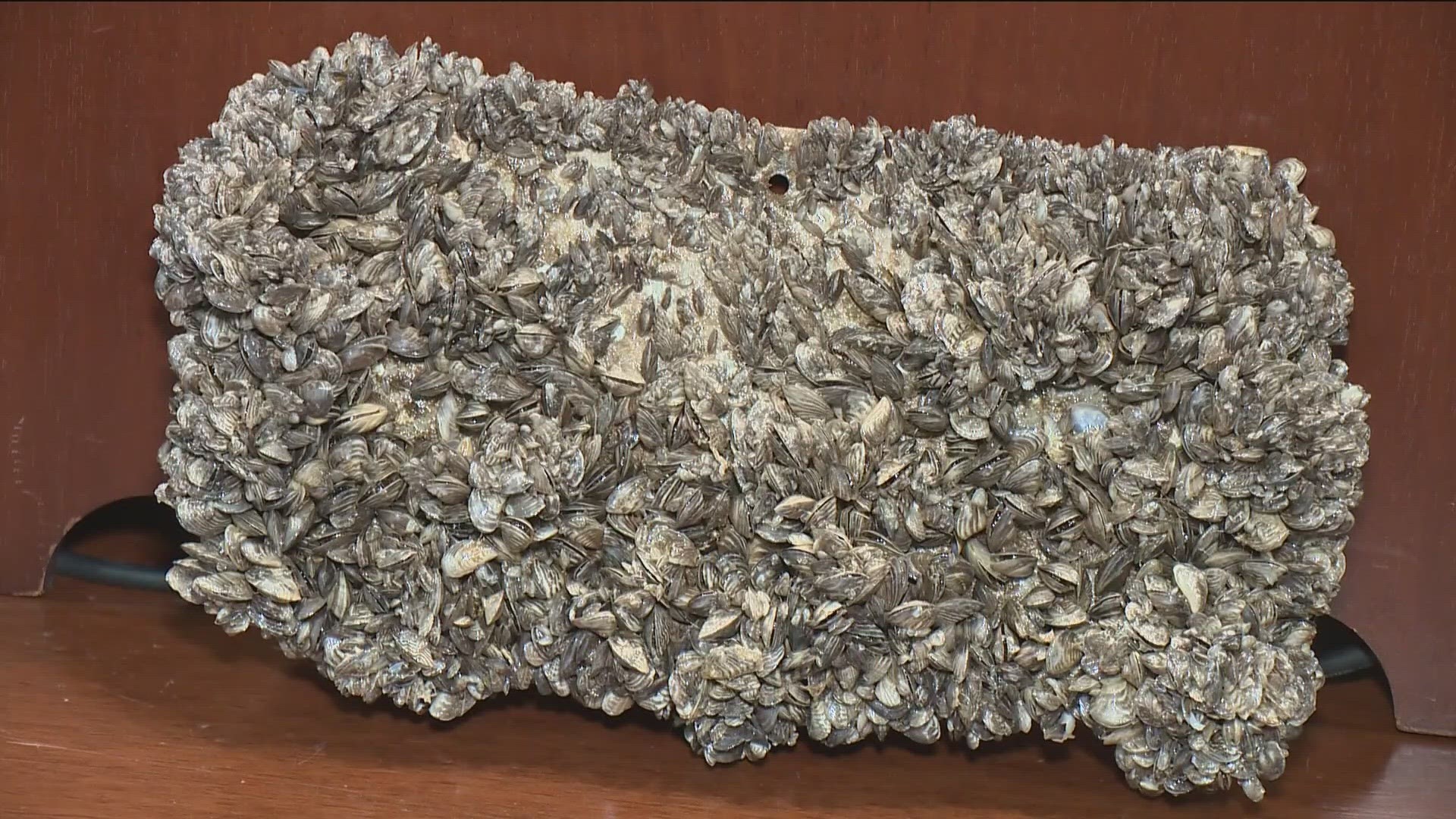It's been two weeks since invasive quagga mussel larvae were found in the Snake River near Twin Falls.
Since then, the Idaho State Department of Agriculture (ISDA) has done extensive sampling around the mid-Snake River, finding veligers - the larval form of the mussels - between the Twin Falls dam area and Centennial Park.
The ISDA also found a plume with an adult quagga mussel near Shoshone Falls.
"ISDA has implemented a really aggressive response to this issue, and this is a pace that is probably unprecedented across the US in terms of responding to this type of invasive species find," ISDA Director Chanel Tewalt said.
The ISDA will be using a copper-based formulation called "Natrix" as a treatment. The formulation is labeled and approved by the EPA, and similar copper-based products have been used in Idaho for mussel, fish, algae and plant control.
"It's been extensively studied," Tewalt said. "It's also been utilized in other waterways and by other states before."
Treatment will start on Tuesday October 3, and will take place in two phases over the course of 10 days.
The copper solution will be applied in three areas of the Snake River:
- Shoshone Falls to Pillar Falls
- Pillar Falls to Centennial Waterfront Park
- Twin Falls Deep Pool
The ISDA shared their treatment plan strategy during a town hall in Twin Falls Sunday evening.
The goal of the treatment is to eliminate quagga mussels at all life stages. The ISDA says the treatment will stay in the water for about three days and is not expected to impact any drinking water sources.
However, the treatment is expected to kill fish and aquatic plants and algae within the treatment area of the Snake River. Idaho Fish and Game has established a benchmark on current fish populations that will be used to help guide future fish restoration efforts.
The section of the Snake River from the Twin Falls Dam to Niagra Springs remains closed as agencies try to stop the "potential crisis."
"Idaho has spent the last 15 years trying to prevent the introduction of quagga mussels because we know how they would irreparably change the way that we interact with water," Tewalt said. "That's in terms of hydropower generation, irrigation, recreation - all of the things that we love about Idaho's waterways would be truly threatened by the establishment of a quagga mussel population. So that's what we really need to work toward, is making sure that we can keep Idaho's waters pristine and in the condition that we all know and love."
More information about the quagga mussel treatment plan can be found on the Idaho State Department of Agriculture's website.
Watch more Local News:
See the latest news from around the Treasure Valley and the Gem State in our YouTube playlist:
HERE ARE MORE WAYS TO GET NEWS FROM KTVB:
Download the KTVB News Mobile App
Apple iOS: Click here to download
Google Play: Click here to download
Watch news reports for FREE on YouTube: KTVB YouTube channel
Stream Live for FREE on ROKU: Add the channel from the ROKU store or by searching 'KTVB'.
Stream Live for FREE on FIRE TV: Search ‘KTVB’ and click ‘Get’ to download.

